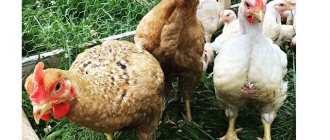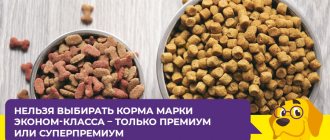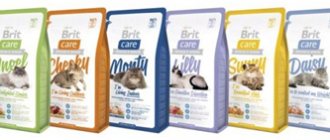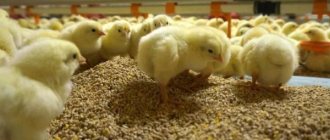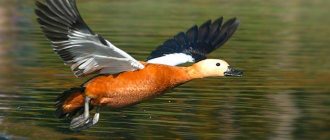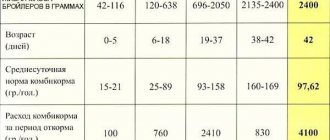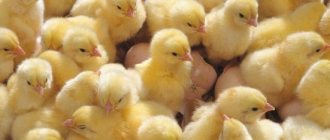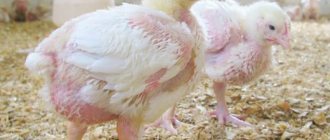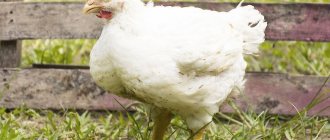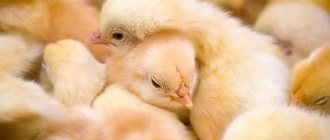The well-known folk saying “chickens are counted in the fall” appeared for a reason. This is due to the high mortality of young animals in the first days of life. Moreover, the reason for this is not diseases and living conditions, but an incorrectly selected diet. This is the main factor influencing the production of strong and strong livestock, which in the future will be able to demonstrate high egg production rates or good weight gain.
Compound feed for chickens - the main advantages
Properly selected nutrition will not only provide the chicks with excellent health in the future, but will also increase their productive abilities. It is the diet and its richness that lays the foundation of immunity and resistance to various infections, diseases and parasites from the first days.
By choosing combined feed, the breeder receives a fully balanced and prepared type of feeding, which includes not only the main grain components, but also a sufficient amount of micro- and macroelements, vitamins and other components that contribute to the proper development of the bird and accelerate its growth.
Feed for broiler chickens: which ones to choose
Typically, owners of private farmsteads who raise broilers produce their own feed or purchase the feed that they can get. But if you have a choice, then it is better, of course, to understand the compositions and purchase feed for each period of growing broiler chickens for a balanced diet.
Recently, Best Mix feed has been very popular. Its composition is optimally balanced and contains corn flour, soybeans, wheat and its products, sunflower and its cake, salt, fish meal, soda, mineral and vitamin complexes, amino acids and much more.
The same manufacturer produces vitamin and antibacterial supplements that must be given to broiler chickens in the first days of life. The reviews are mostly positive and if you use products from this brand, you can leave your feedback in the comments.
Important! Broiler feed is selected based on factors such as the age of the bird and its breed. An adult must necessarily receive corn, wheat (crushed), peas, barley, small shells, chalk (we have already listed these components in percentage terms above).
Description of feed "Start"
This is one of the best feeds today, it is a standard for manufacturers and combines only the best components. It is suitable for young animals from the first day of life and has a beneficial effect on their development. The composition is well digested and perfectly absorbed, suitable for ordinary chickens and broiler chicks.
Among its advantages are:
- Ingredients: carefully selected components with all necessary additives and biologically active substances.
- Feeding scheme - the food is very easy to use and does not require time-consuming mixing and preparation.
- Savings – Portioning and rational use will reduce waste and keep food costs to a minimum. Dry mixtures do not spoil in feeders and do not turn sour.
- Quality of growth - thanks to the composition, feeding significantly increases the quality of weight gain, improves immunity and reduces mortality.
- Convenience - compound feed is easy to divide into portions or quantities without spending a lot of time. There is no need to measure the amount of proteins, minerals and vitamins by gram; just open a pack of the prepared mixture and distribute it among the feeders, observing the required dosage.
- Storage – the food is great at home at room temperature and is unpretentious.
- Cost - quite adequate prices help poultry owners to significantly reduce the cost of feeding young animals.
What not to feed broilers
Despite the fact that chickens are practically omnivores and often feed on pasture, the following foods are contraindicated for them:
- Vegetable and butter;
- Alcohol and fermentation products;
- New milk;
- Soaked bread;
- Sand too fine;
- Boiled potatoes without anything;
- Stale table waste;
- Sausage;
- Chocolate and cocoa;
- Cheese;
- Citrus peeling;
- Jam.
For stable growth, the diet must be varied and not consist, for example, of only mixed feed. This may cause the bird to refuse other feeds.
Suitable age for using Start brand food
It is this type of feed that is popularly called “nulevka”, since it is perfect for feeding newly hatched babies from the first hours of birth. But there are slight differences in the composition for regular chickens and broilers:
- The food is suitable for chicks aged 0 to 7 weeks (for laying hens), but no more.
- For broilers, two weeks of feeding with this feed is enough. It can be used without additional additives or in combination with grass, wet mash, but be sure to provide the young animals with unlimited access to water.
What else is useful to add to broiler feed?
Preparing feed for broiler chickens is not a difficult task, the main thing is to maintain balance. But to keep poultry healthy, its diet (especially chickens) can be supplemented with dairy products (a source of animal protein and calcium):
- Serum;
- Buttermilk;
- Low-fat fresh cottage cheese;
- Reverse;
- Curdled milk.
One important thing to consider here is that if you add milk to the feed, it should not be steamed or sour, otherwise the bird will begin to diarrhea.
Other useful additions to food
Nettle. Rich in vitamins A, E, K, carotene, ascorbic acid, microelements. Especially useful fresh for chickens (can be given from 3 days). You can dry it for the winter.
Grass. It, like nettle, can be given in crushed form to broiler chickens from 2-3 days. For the winter, you can dry hay in bundles and hang it in the chicken coop.
Peas. An excellent source of protein that promotes weight gain and growth. It is better to feed chickens in crushed form as part of wet mash for better absorption.
Bread. The bread contains yeast, which has a beneficial effect on weight gain. It is not advisable to give fresh bread; dried crusts are better. Also, never give moldy bread - it can cause poisoning. Although this product is useful, it is not recommended to add it to the main feed too often.
[ads-pc-1]
Recipe and composition
The main components of Start feed are wheat and corn, which are supplemented with:
- limestone and fish meal;
- salts;
- soybean meal;
- vegetable oils;
- enzymes;
- antioxidants
- and other additives.
The metabolic energy indicator is 305 Kcal.
The mixture for newborn broilers is slightly different in composition. It has an increased percentage of crude protein, added fiber, and the metabolic energy indicator is 300 Kcal. The composition also includes acids in the form of methionine, lysine, cystine, tryptophan compounds, sodium, calcium and phosphorus.
The combination of all components is balanced and selected taking into account the characteristics of age. The content of nutritional components, microelements, and minerals allows you to deliver everything necessary to the chick’s body, having a good effect on digestion, the formation of the bone skeleton, and rapid muscle growth. After using this food, the chicks' egg production and weight improve, and the body's resistance to various types of infectious diseases increases.
“Start” feed contains no antibiotics and their derivatives, GMOs, and no special growth and weight gain stimulants. Production is carried out in accordance with established standards (according to GOST 18221 - 99), only environmentally friendly products and natural ingredients are used.
The release form is small crumbs or grains, which are packaged in bags of the required weight of 25 kg. When purchasing compound feed, you must be sure to familiarize yourself with the composition so as not to purchase a low-quality product filled with artificial additives and synthetic hormones, which have a bad effect on the overall development of chicks and can contribute to the appearance of hormonal and behavioral abnormalities.
How do prestarters and starters affect production costs?
Feeding calves with high-quality starter and prestarter feeds allows them to provide the entire necessary set of nutrients. As a result, animals get sick less, grow better and develop faster. Due to a balanced diet and good care, the heifer is ready for insemination at 13 months. It has been scientifically proven that an animal that calves before 24 months of age will have the greatest milk production throughout its life compared to those animals that calve later. High-quality feeding and vitamin support allow the enterprise to save on the rearing period and reduce the time until the breeding period. Cargill experts recommend paying special attention to the quality composition of starter feeds if farm management is not at a high level. “The weaker the farm management, the better quality starter feed we recommend having. This will help compensate for the shortcomings of care,” says Anna Ozernaya. The starter may contain coccidiostats, as early calves are particularly susceptible to coccidiosis, a widespread disease caused by single-celled organisms. Coccidiosis is often associated with poor indoor hygiene. This acute and severe disease in calves can lead to significant damage and mortality.
According to Cargill experts, a balanced diet, vitamin support, along with the correct conditions for keeping calves during the pre-weaning period (cleanliness, dryness, lack of crowding) will allow you to raise healthy young animals with good productivity.
More information about the line for raising calves from the company can be found at the link. Author:
Natalya Antonova
Tags:
Cattle
5084 views
Rules for preparation and feeding
In fact, the “Start” compound feed is a complete nutritional composition for both newly hatched chicks and grown chicks several days old. It is completely ready and does not require adjustments or additions.
Every breeder must remember that there must always be water in the drinking bowls. It is important to provide the chickens with unrestricted access to it.
There are always instructions on the packaging that list the basic feeding rules and the daily allowances, so the best thing to do is to read the recommendations and strictly follow them in the future. The daily dose is usually divided into several doses. For example, in the first 5 days, chicks should eat at least 6, but no more than 8 times a day, after which this amount is reduced to 3-4. Ten-day-old chicks need 3 feedings per day.
Compound feed is given both dry and soaked using broth, whey, curdled milk, which should be slightly warmed up, since chickens eat warm food more willingly.
In the future, owners should remember that it is impossible to suddenly change the type of food; it must be introduced gradually, changing the dosage, since the chicks are very sensitive and may react negatively to the changes that occur.
Benefits of starting mixture
The compound feed is called “starter” because it is intended for the initial nutrition of young animals. As the broiler grows, the feed is divided into groups depending on the age of the bird. Day-old chicks receive pre-launch nutrition, and from the 7th to the 30th day of life - starter feed. Almost grown broilers that have completed their physical development receive finishing feed.
Pre-start food for broilers is designed to support the developing gastrointestinal tract in babies and prepare them for the next stage of nutrition - dry food. Starter feed is suitable for feeding chickens whose gastrointestinal tract system is fully developed. It will give the birds an optimal impetus to normal physical development and ensure the strengthening of future health.
The early age period is extremely important for the entire life of a broiler - this is the foundation for its successful growth and health. Therefore, at this time it is necessary to give the chickens the right, balanced feed. Starting from the 7th day of life, the broiler is given large feed with granules about 2 mm in size. All granules must be the same size and free of dust. This food is suitable for chickens up to one month of age. Then, gradually, in small doses, transfer the birds to the next type of feeding. If you do this abruptly, the gastrointestinal tract will respond with disorders and malfunctions.
Dosage Tips
The correct calculation must be made from the first day. After birth and until the seventh day, 10–20 grams per chick is sufficient. The second week involves increasing the dose to 20–40 grams. From 14 to 21 days the volume is increased to 60 grams, from 21 to 28 – to 80 grams. From 28 to 35 days, the total daily weight per head can be from 115 g, and for broilers it can reach 170 g.
It is important to constantly monitor feeding behavior in chicks and clearly understand what they require. If the food is eaten quickly and there is nothing left in the feeder within 20–30 minutes (maximum), it is necessary to increase the daily dose, even despite the recommendations of the manufacturers. Under no circumstances should starvation be allowed, otherwise it will have a bad effect not only on growth, but also on the general health of the livestock.
Watering broiler chickens
Birds should always have clean and fresh water. Detailed article on how to properly water chickens. You can learn all about nipple drinkers here. And in this article you will learn how to make a drinking bowl for chickens with your own hands. By the way, vacuum drinkers are recommended for broilers (1 piece per 50 birds).
Recipes
There are a huge number of options for DIY broiler feed. The only condition is the naturalness and high quality of the components. In the first days of life, in large farms, chicks begin to be fed with compound feed, which simplifies the breeding process. Private and small farms prefer to feed the chicks with chopped eggs, dairy products (cottage cheese, milk, whey) and millet for the first days. Food should be easily digestible, so in the first days you should not add grass to your diet; this is done exclusively on the 3rd day of life.
"Start"
Approximate composition of “Start” feed:
- finely ground corn, wheat, oats, barley - 5 kg each in equal proportions (the total share in the feed should not exceed 73%);
- soybean - 3.8 kg (14%);
- milk powder - 3.3 kg (12%);
- shells (0.2 grams per day per head).
Due to the low consumption in the initial period, it is not recommended to prepare a large amount of feed for a small population: chicks are fed this composition for the first two weeks of life; in the future, this feed will be unnecessary.
"Height"
Food preparation takes place in several steps.
Step 1. Grind 11.250 gr. corn (45%), 2.5 kg of wheat (10%), 3.750 grams of corn (15%), 2.5 kg of soybeans (10%).
Step 2. Add 1.25 kg. yeast (5%), 1.750 kg. fish meal (7%), 300 grams of chalk (1-1.2%), 1 kg. meat and bone meal (4%), shells (0.3 grams per day per head), herbal meal (optional).
"Finish"
To create a 20 kg bag of finishing feed you will need:
Step 1. Grind 9 kg of corn (45% of the total), 3.8 kg of wheat (19%), 3.8 kg of corn (19%).
Step 2. Add 1 kg of yeast (5%), 0.50 kg of fish meal (about 2-2.5%), 200 grams of chalk (about 1%), 400 grams of meat and bone meal (2%).
Step 3. Add shell, a source of nutrients for the animal (calculation 0.3 grams per head per day).
Step 4. Mix everything thoroughly.
The result is a 20-kilogram bag of complete feed that meets all nutritional requirements at the finish line, made independently.
